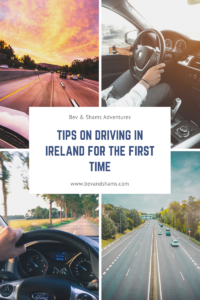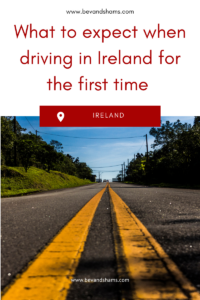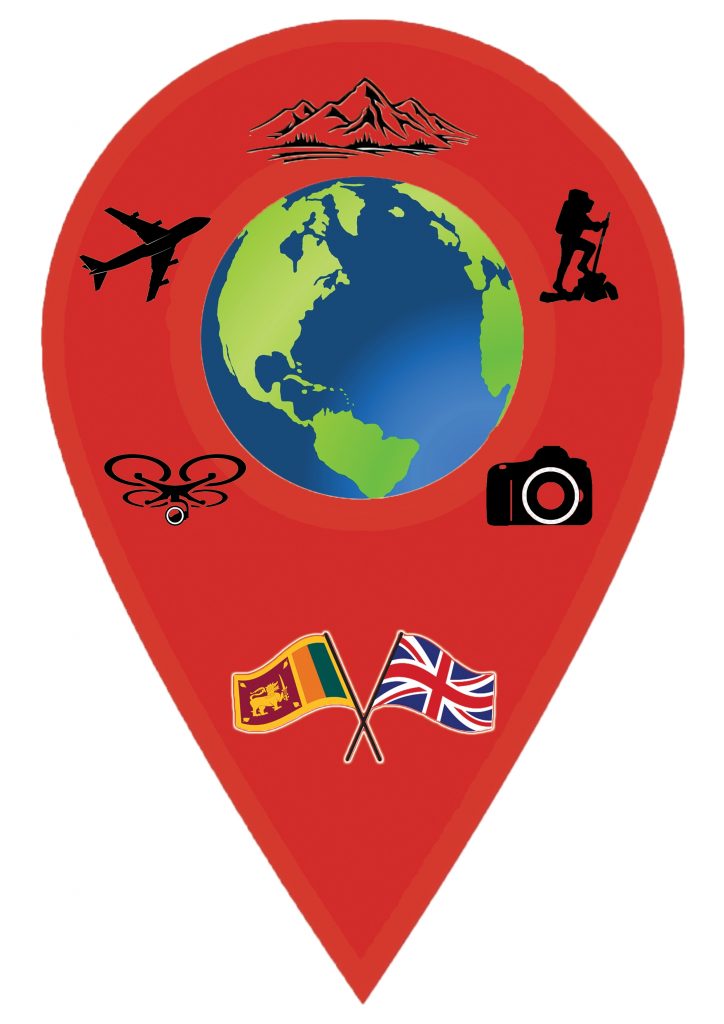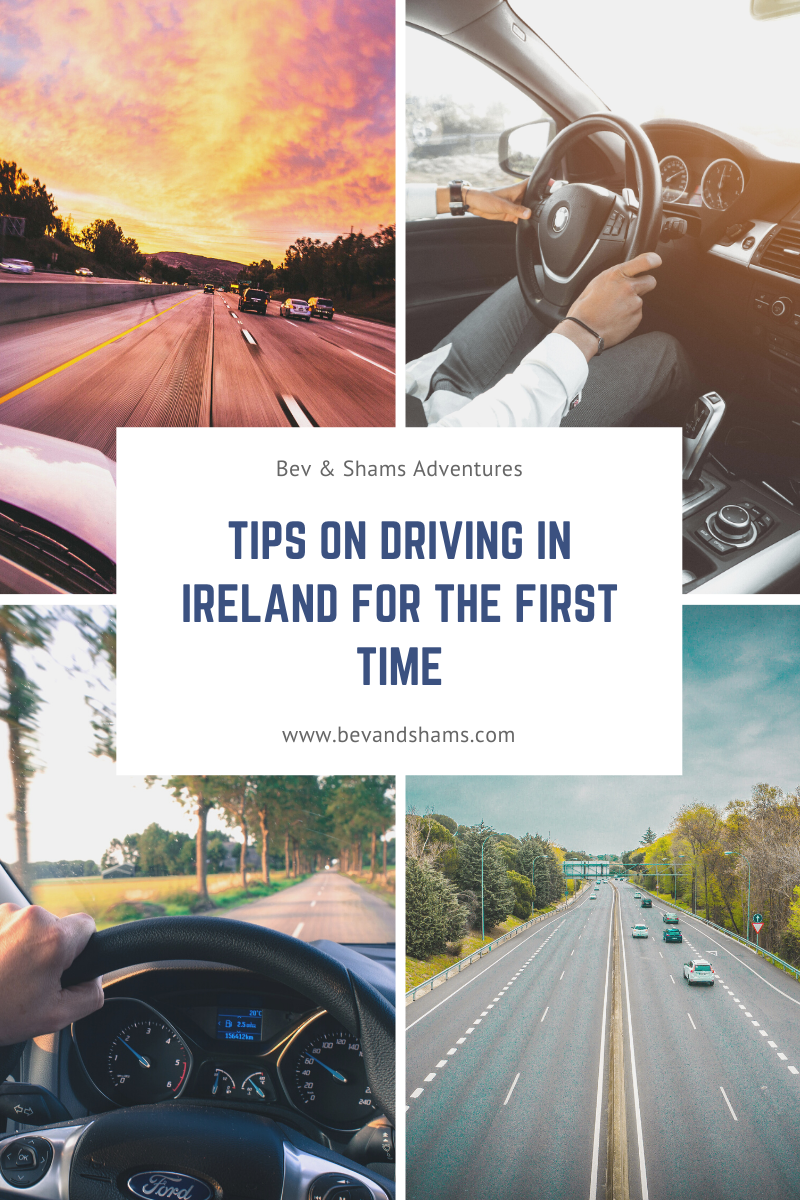What to expect when driving in Ireland for the first time
Driving in Ireland can be a scary and daunting experience, especially if you have never driven on the left-hand side of the road, or in Ireland. But it is simple and easy, it’s one of the best ways to get around the Emerald Isle’s and it’ll be an unforgettable experience.
The Republic of Ireland is one of the most beautiful countries to visit. Stunning landscape, charming villages and rich history, this country offers a unique setting for exploring by car.
But navigating the narrow and unfamiliar roads, adapting to driving on the left-hand side of the road, can pose its challenges.
We jumped in with both feet, when we took a 4-day road trip in Ireland, but loved the experience, we can’t wait to head back to Ireland for another road trip.
So, whether you’re a seasoned driver or new to driving, we share everything you need to know before embarking on your Irish driving adventure. From road rules and regulations to tips for staying safe on unfamiliar terrain.
Let us help you ensure that your experience of driving in Ireland for the first time is nothing short of extraordinary.
There may be affiliate links within this article, using these links will not cost you anything extra, but we may earn a small commission. Thank you for your support.
Table of Contents
Preparing for the journey
Before you set off on this remarkable journey, a bit of preparation will go a long way in ensuring a smooth and unforgettable trip.
Obtaining necessary documents
You will need a valid driving license to drive in Ireland.
If you do not hold a valid full UK or European license, you may need an international driver permit.
Always check what requirements are needed, before you travel.
It’s a legal requirement that a vehicle must have insurance in place for the vehicle to be on the road.
If you are hiring a vehicle, the hire company should arrange the insurance for you, but if you are unsure, always check with the hire company first.
If you are travelling with your vehicle from any European country, check with your insurance provider to ensure it covers you in the event of an accident and it covers for European destinations too.
When we hired a vehicle from Sixt, they included all the necessary insurances, and we didn’t need to use the insurance.
It will also be a good idea to keep all documents with you, while you are driving. This includes car insurance, driving license, hire documents, or vehicle registration documents if you are travelling with your vehicle from Europe.
Should the authorities request to see your documents, or you need to produce this at the scene of an incident, you have these to hand.
The minimum age to hire a vehicle in Ireland is 21 years of age, but some insurance companies may impose a higher age requirement. Check this before placing the booking.
Familiarise yourself with the Irish road signs and road rules/laws
Before you hit the great open road in Ireland, take some time to familiarise yourself with the countries driving laws and road signs.
Ireland follows the rules of road set out by the Road Safety Authority, so it’s important to understand the basics.
For example, you drive on the left-hand side of the road in Ireland and overtake on the right-hand side.
The driver and passengers must always wear a seatbelt, you should give way on a roundabout and travel clockwise around the roundabout.
You should also make sure you understand the common road signs, such as speed limits, roundabouts and parking restrictions.
Unless signposted otherwise, the speed limits in a built-up area such as a small village, town, or large city 50km/h, on local or regional roads 80km/h, national roads 100km/h and motorways 120km/h.
Being aware of the laws and signs, will help you navigate the roads safely and confidently during your Ireland trip.
Choosing an appropriate vehicle rental company
It is possible to drive your vehicle in Ireland. There are ferry services from the UK to Dublin in Ireland.
If you do drive your own vehicle, take some proof of ownership such as the vehicle registration document, driving license and proof of insurance.
Alternatively, you could hire a vehicle for the period you’re in Ireland.
If you’re on a budget, do some research to establish which is cheapest, hiring a vehicle or taking your own vehicle.
The main hire companies in Ireland are:
- Avis
- Budget
- Eurocar
- Hertz
We hired a vehicle from Sixt, for our road trip in Co. Wicklow. They are a great company and would use them in the future.
When we did our research, Sixt was the cheapest rental company, but they also gave a great level of service.
Always check the companies’ terms and conditions and make sure there’s no restrictions such as, age.
Understanding Irish Road Systems
Ireland’s roads offer a mix of modern highways, scenic coastal routes, narrow country lanes, and historic pathways, each contributing to the overall charm of driving in this beautiful country.
Different road types
Let’s delve into the key aspects you should know:
- Motorways – These are high-speed, multi-lane roads, with a speed limit of about 120km/h, unless stated otherwise.
- N Roads – These are major routes connecting cities and towns. They vary in size, from dual carriageways to narrower two-lane roads.
- R Roads – These roads link smaller towns and are typically single-lane carriageways. They provide access to many scenic areas.
- Roundabouts – always give way to traffic on the roundabout and travel clockwise around the roundabout
Tips on how to navigate a roundabout
If you have never driven on a roundabout, they can come in all forms. Small mini roundabouts to large roundabouts with multiple exits.
When approaching the roundabout, look to the right and make sure it is clear to enter.
Check your surroundings, the signs and road markings. Make sure you’re in the right lane for your intended route.
I have worked in the insurance industry and the number of claims I have dealt with, where someone has been in the wrong lane or changed lanes hitting another vehicle.
If you are not sure, a rule of thumb is to stay in the left lane for the first and second exit. Stay in the right-hand lane if you intend to take the third exit.
If the roundabout has multiple exits and isn’t marked, then stay in the middle lane for the third exit and the right-hand lane for the fourth exit.
If you are in the wrong lane, just slow down, indicate your intentions in time, check your mirrors and blind spot and only move into that correct lane when it is safe to do so.
Don’t panic and don’t change lanes without doing your checks.
In our experience, Irish drivers were always patient and never aggressive.
Tips for navigating narrow country lanes and rural areas
Getting out into the countryside of Ireland is beautiful. The landscape and scenery are well worth the drive.
If the roads are narrow and unfamiliar, it can be scary, especially if some roads are just big enough for 1 car.
Just remain calm and drive at a slower speed. If you do see a vehicle approaching in the opposite direction and the road isn’t big enough for both vehicles to pass, then stop and assess the road. You may need to reverse back to a passing point where the road is big enough to allow the vehicle to pass.
If the road is wide enough, keep as far to the left as possible and take it slowly.
Rules of the road
One of the biggest adjustments drivers need to make in Ireland, is driving on the left-hand side of the road. It can be a little confusing at first especially if you are used to driving on the right-hand side.
When travelling on a dual carriage way or a road with multiple lanes, always stay in the left-hand lane and when overtaking, move over to the right-hand lane, when it is safe to do so. Indicate, check your mirrors and blind spots before moving. Once you have overtaken, indicate, check your mirrors and blind spot before moving back into the left-hand lane when it is safe to do so.
If driving on the left is unfamiliar, practise driving in a quiet area first before venturing out onto busy roads.
It may feel strange at first, but with practice, you’ll soon become comfortable driving on the left side of the road in Ireland.
In many large cities, such as Dublin, parking is limited and very expensive.
On our road trip in Ireland, we visited Dublin and parked on the outskirts of the city, in the park and ride centre.
Researching what parking is available in the locations you are staying.
It was practical for us to park at the park and ride, in the outskirts of Dublin, but in Co. Wicklow, there was plenty of public car parks at a reasonable price.
While Ireland is a safe country to visit, thieves could target vehicles with valuables or belongings within a vehicle.
To prevent theft, leave anything locked away in the boot or the glove compartment where it can’t be seen.
Navigation & GPS Usage
Planning your route ahead of time and using GPS and navigation tools effectively will help you get around Ireland with ease.
GPS and navigation apps
Before your trip, ensure you have a reliable GPS device or smartphone app installed.
When we hired a vehicle from Sixt, it had a sat nav installed in the vehicle, which helped with navigating Ireland on our road trip.
If your vehicle doesn’t have a sat nav, most mobile phones have maps, or you can download Google maps, Apple Maps etc.
Download offline maps or check if your app allows navigation without and internet connection, as you may encounter areas with limited network coverage, especially in remote areas.
Always make sure the maps are up to date, this will help you avoid any detours due to road closures, new constructions, or changes in traffic patterns.
Tips for planning routes ahead of time
With the use of GPS, we no longer get a map out to check the route.
While GPS are generally correct, you should still get a map and plan your route. That way if the GPS goes offline, you can still navigate without it and it will significantly enhance your driving abilities in Ireland.
Alternative transport options with major cities
Driving and parking in most major cities in Ireland may not be practical with a vehicle. Parking is limited or expensive.
It is encouraged that you use other forms of transport, such as park and ride, public transport, bicycle, walking, hop on hop off bus etc in large cities.
Remember to consider factors such as cost, convenience, and the specific locations you wish to visit when choosing your alternative transportation options.
Coping with Challenges & Emergencies
In the unlikely event that you do breakdown or involved in an accident, do not panic. Remain calm and pull over to a safe place.
If you breakdown, contact the breakdown company to help you. They will ask for your location and a breakdown company will be out to rescue you. Always check the terms and conditions of the breakdown policy and what is covered and not covered.
The same principle applies, if you’re involved in an accident. Remain calm and pull over to a safe place.
As I have worked in the car insurance industry within the claims team, I would recommend taking pictures at the scene of the incident, exchanging details at the scene of the incident and provide your insurance details to the other party involved.
You will then need to call the insurance company to report a claim and the insurance company will deal with the rest.
Depending on the level of cover you have in place, your vehicle damages should be dealt with by the insurance. However, always check the level of cover in place, as not all levels include vehicle damage repair.
Driving in Ireland for the first time
Driving in Ireland for the first time can be a thrilling and challenging experience. While its scenic beauty is unmatched, it’s still important to prepare and know the different road rules and conditions.
With careful planning, patience and adaptability you’ll have a smooth journey on your Irish road trip.
By embracing the adventure, prioritising your safety, planning your trip, first time drivers can be confident in navigating their way around the Emerald Isle’s picturesque landscape, while enjoying a memorable trip.
Continue your travel planning around Ireland, with these useful posts:
- Best things to do in Dublin for first time visitor
- 4 day road trip in Wicklow Mountains Ireland
- Park View Hotel Review – Ireland
- Travel guide to Ireland
- How to travel on a budget
- What to pack for a weekend vacation
- How to survive a long layover
- Tips for first time flyers
- Travellers gift guide
- Guide to purchasing travel insurance




